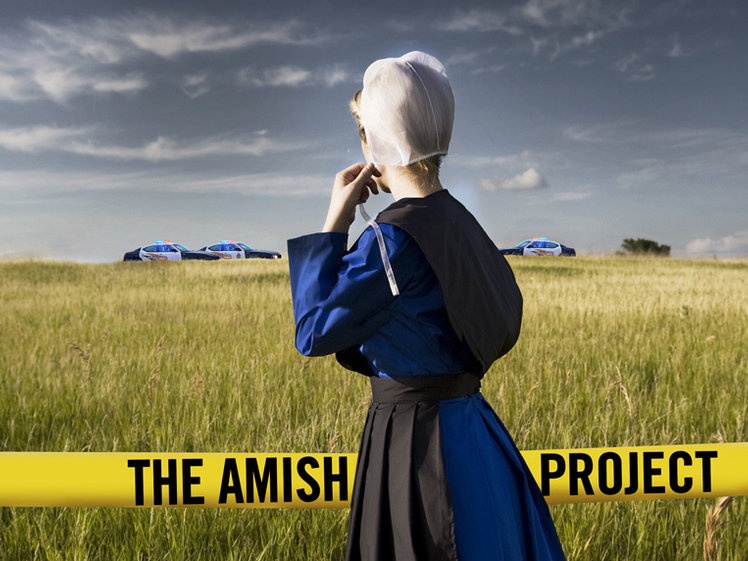On the morning of Oct. 2, 2006, an armed gunman went into a one-room schoolhouse in the Amish community of Nickel Mines in Pennsylvania. After a brief standoff, the gunman shot all 10 of his Amish schoolgirl hostages – aged six to 13 – before then killing himself. Five of the young girls died; the other five miraculously survived.
It was a day filled with immeasurable, unfathomable tragedy. That horrific day, however, was soon followed by days filled with something else: immeasurable, unfathomable humanity and forgiveness.
The Amish community quickly forgave the shooter, with many extending their forgiveness and comfort to the family he left behind. Several members reportedly attended the killer’s funeral to show their condolences, and a charity was soon established by the Amish to help support his family. It’s an incredible story – one where from great tragedy emerged greater human grace.
"There are no interviews with the specific people who did that, about exactly why or how; we just know that they did that," said local theater director Leda Hoffmann. "From that, we get to think about why and what would that feel like and, as we look at many different ways of dealing with tragic events, what does it mean to reach out to the least likely person you might reach out to – who, to them, is the most likely person to reach out to."
Hoffmann hopes to bring this story and those questions back into the spotlight with "The Amish Project," a one-woman play arriving at the Milwaukee Rep starting Wednesday, Feb. 11.
"As soon as this play came across my desk, diving into it and looking into what happened was just immediately fascinating," Hoffmann said. "The way the Amish immediately forgave the gunman and what exactly does that mean; that question was really interesting to me."
The director admitted that, before she got a look the script, she didn’t recall much, if anything at all, about the events that took place in Nickel Mines back in 2006. However, the story – written by Jessica Dickey – quickly drew her in, and as she began researching for the show, she learned more and more not only about the shooting and the remarkable aftermath, but about Amish culture overall.
For instance, one of the biggest misconceptions, according to Hoffmann, is that there is that all Amish people must follow the same overall set of rules strictly guiding all behavior. In actuality, it depends on what each individual community says.
"The diversity of ideas within what we see as one homogenous community was new to me; I hadn’t really thought about it before," Hoffmann noted.
Another crucial element of Amish culture embedded in the play is the concept of "uffgewwe" – pronounced "oof-give-ah" – a word which means "to give up." In the case of the Amish people, it reflects the sacrificing of materialistic and individualist wants and needs for the greater good of the community – even a strong emotion like anger or hate.
"By holding hate in your heart, most Amish people wouldn’t say that that is a path to healing," Hoffmann said. "So if something horrible happens to you, it’s in God’s hands, that is great comfort and the ideas of hatred and active revenge are not helpful in this process.
"What does it mean to give yourself up to your community, to not have a strong focus on being an individual," she continued. "The play gently – without ever really explaining, because it’s almost impossible to explain – just looks at the big picture around what it means to be Amish so that you can think about that issue."
To do this, "The Amish Project" takes the perspectives of several characters, ranging from an Amish scholar to one of the young victims to the gunman to the gunman’s widow to non-Amish Nickel Mines residents. All the while, jumping from person to person, bouncing between different ages and genders and ideals, is just a single actress: Milwaukee Rep associate artist Deborah Staples.
"What does it mean theatrically, as a director, to look at a play where you have a diversity of opinions and ideas and perspectives on something sitting in one person?" Hoffmann said. "So just the storytelling nature of this was interesting to me."
Of course, the one-actor nature of "The Amish Project" also comes with its fair share of unique challenges and attributes as well. Dickey’s script isn’t like many one-person shows, often comprised of simply long character segments following a particular person for an extended monologue and allowing the actor to slip into a perspective for an uninterrupted period of time. Instead, Staples refers to its flow as "Robin Williams-style storytelling," fluidly dropping into a character for a moment and then coming out of that perspective before flying into another one. The story isn’t told linearly either.
"It’s tricky when the ideas of the play shift, and we have to figure out where that new idea came from when it pops in," Hoffmann said. "That’s what we track through the show: the story, the ideas behind and talking through a sense of time. There are all those details to work through, but in the end, you just trust the writing and trust the story and trust that you know who these people are. And you just let it go, and it flows."
A crucial part of the equation, obviously, is the lone woman playing all of these people. When all of the drama and all of the characters rest on the shoulders of a single actor, the need for the right balance of creative balance between direction and cooperation is exceedingly crucial for Hoffmann.
"You don’t want to end up in a situation where you’re fighting to have an actor fit to some preconceived idea," Hoffmann said. "We have to build the world, but she’s a gigantic part of that. So you get into rehearsals, and you start figuring out, ‘Where does this character sit for you,’ and ‘What are the ideas that are important to you?’ Then it’s just a balancing act, back and forth and back and forth."
"This is her having a chance to figure out what feels right to her, and what feels right to her is always the right answer because you don’t want to put her on stage alone, fighting for something she hasn’t quite figured out yet," she continued. "At the same time, you’re always pushing together to find that thing that’s a further stretch, that maybe feels uncomfortable for a second but we’ll work through it and get to something else."
In the end, the hope is not just to present an acting showcase, showing off how well a performer can morph between voices and tics and dialogue. The goal, for Hoffmann and the rest of "The Amish Project" cast and crew, is showing and telling the story of the Nickel Mines community on stage. A story about a terrible tragedy, but by no means overwhelmed by it.
"Everyday that I’m in rehearsals for this play, I leave thinking the world is a better place than I did when I went in, and that’s a surprising thing to say about a play about a school shooting of young Amish girls," Hoffmann said. "You get to look into people’s psychologies, and the play asks you to think about the humanity behind all of them. They’re all centered in one person; they all have a common humanity by the very nature of the way in which this play is done. And there’s something beautiful and uplifting about seeing that common humanity."
As much as it is a gigantic cliché to say that one has always had a passion for film, Matt Mueller has always had a passion for film. Whether it was bringing in the latest movie reviews for his first grade show-and-tell or writing film reviews for the St. Norbert College Times as a high school student, Matt is way too obsessed with movies for his own good.
When he's not writing about the latest blockbuster or talking much too glowingly about "Piranha 3D," Matt can probably be found watching literally any sport (minus cricket) or working at - get this - a local movie theater. Or watching a movie. Yeah, he's probably watching a movie.







